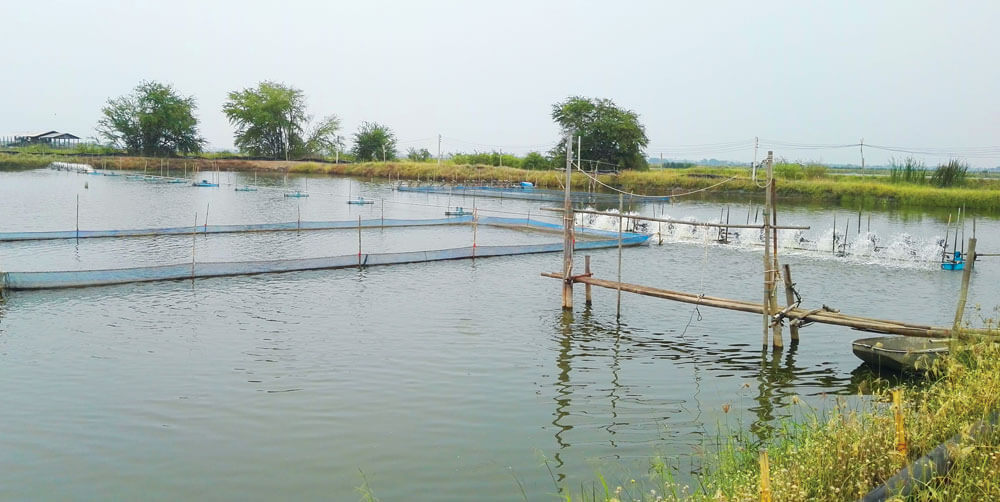Market Diversification
$25 billion goal for the protein sector
PROTEIN INDUSTRIES CANADA has a big goal for Canada. Lisa Campbell, director of programs at Protein Industries Canada (PIC), shared the goal at Canola Week: By 2035, Canada needs to grow the plant-based food, feed and ingredient sector to $25 billion and provide 10 per cent of the world’s plant-based food products.
In a report called The Road to $25 Billion, PIC outlines this “once-in-a-generation opportunity” for Canada to take a lead in plant-based proteins.
“This bucket of foods today includes products from the primary plant-based protein producers, including Roquette and Merit, for example, as well as plant-based alternatives to meat, dairy and eggs,” says Bill Greuel, CEO of PIC. “Basically when crop commodities are turned into plant-based protein ingredients.”
Using this definition, the sector is worth $2.5 billion to $3 billion in Canada, based on estimates of business-to-business ingredient sales and domestic retail sales of plant-based foods. PIC doesn’t have a good handle on Canada’s market share at this time, but Greuel estimates it at well below 10 per cent in a sector currently dominated by soy and wheat proteins.
The report outlines a long list of strategies and priorities. Two key steps relate to regulations and processing capacity.
Regulations
To grow the plant-based protein industry, Canada needs a pathway to accurately identify sources of protein and bring new products to market.
To be labeled as a “source of protein” in Canada, foods have to meet certain standards for protein quality – related to the supply of indispensable amino acids and digestibility. Based on current rules in Canada, lentils – a known source of plant-based protein – cannot be labeled as a source of protein. This is where the labeling system needs an update.
Canada also needs to lead on approval of other novel protein sources. Singapore, for example, has approved cellular-based meat. This is meat tissue grown from actual animal stem cells and fed with plant-based amino acids. As written in The Road to $25 Billion: “As alternative sources of protein emerge, and we experience a convergence of evolution between plant-based, fermentation science and cellular-based meats, those jurisdictions that balance food innovation with a business-focused regulatory system will attract major ingredient and food processing companies.”
Greuel says Canada is a highly-regarded exporter “because of our regulatory system” but Canada has regulations that are holding back its growth potential. That is why PIC set up its Regulatory Centre of Excellence.
Christopher Marinangeli is the centre’s director. “We are not lobbyists,” he says. “We are facilitating experimentation to help address specific challenges of the sector and generate data to make informed policy changes.”
Because government regulatory agencies don’t do research themselves, organizations asking for regulatory changes have to provide scientific data and evidence to substantiate that change. Agriculture and Agri-Food Canada and Health Canada have advisory roles in the regulatory projects led by PIC’s Regulatory Centre. “We want to be transparent and inclusive,” Marinangeli says. “It’s not emotional. Everyone’s head is in the right place.”
“If we do not act quickly to establish critical mass in crop processing and ingredient manufacturing, other jurisdictions will, and Canada will not capture our global share, nor realize the opportunity that is in front of us.”
—Protein Industries Canada, from The Road to $25 Billion
Processing capacity
To achieve the goal of $25 billion, Canada needs to quickly scale-up its ingredient processing. “At an unprecedented rate, ingredient processing capacity is being built and supply chains are being established as countries race to satisfy demand,” PIC writes in the report. “If we do not act quickly to establish critical mass in crop processing and ingredient manufacturing, other jurisdictions will, and Canada will not capture our global share, nor realize the opportunity that is in front of us.”
Canada has many strengths on which to build a $25 billion plant-based food, feed and ingredient sector by 2035. Ernst and Young, in a report PIC commissioned in 2020, listed them as market access; sustainable production practices; large agricultural land base; food safety and quality standards; and research, talent and agri-food clusters.
To give a few specifics, Canada has trade agreements with all the major markets. Canada has the third highest ratio of arable land to population, giving it the domestic supply to feed into domestic processing. And Canada has a diversity of feedstock, including canola meal, pulses and cereals, while the U.S., for example, is pushing hard on a soy-based system.
Aquaculture opportunity for canola meal
AQUACULTURE represents a potentially large opportunity for Canadian canola meal. “The world is now farming more fish than is caught from wild stocks,” says David Dzisiak, chief operating officer for Botaneco. Data from the Food and Agriculture Organization of the United Nations show wild caught and farmed fish neck and neck in 2020, with aquaculture trending upward quickly and wild caught trending downward. Canada currently produces 5.7 million tonnes of canola meal. Once the new canola processing capacity comes on stream in the coming years, the country could produce up to 9 million tonnes of meal. “We need to find high-value homes for that meal,” says Brittany Wood, director of canola utilization for the Canola Council of Canada.
Canola meal provides a proven benefit to increase milk yield in dairy cows, and dairy feed remains the biggest market for Canadian canola meal. However, Wood says U.S. and Canadian dairy markets may be tapped out in terms of growth potential. “Canola meal will also see an increased challenge from soybean meal,” Wood says, because the U.S. will also be processing vastly more soybeans to supply oil for its regenerative diesel facilities. That means more soybean meal, and the U.S. soybean industry will be aggressive in marketing it.
Aquaculture – fish farming – also “plays to canola meal’s strengths,” Wood says.
Carp, catfish, tilapia and salmonids are the top four farmed fish. Shrimp are also farmed in large quantities. Standard canola meal is a great fit for tilapia and carp farms, common in China. China is, by far, the biggest fish farming country. Specialty canola meal, like the high-protein, low-fibre product from Botaneco, works for farmed salmon and shrimp.
Botaneco’s proprietary processing method starts with the removal of canola seed hulls. “The water-based process allows for separation and isolation of the major seed components like oils, fibres, carbohydrates and proteins,” Dzisiak says. “This allows us to uniquely concentrate the protein and reduce the key anti-nutritional factors down to no-effect levels in salmon.”

Ag and petroleum companies partner on renewable diesel
AGT WORKING WITH FEDERATED CO-OP on a renewable diesel and canola protein meal project at Regina is just one example of new relationships forming between agriculture companies and petroleum companies.
“It is pretty amazing to see oil and ag holding hands in oilseed crushing,” says Chris Vervaet, executive director with the Canadian Oilseed Processors Association.
In his Canola Week presentation, he shared three other examples from the U.S.:
- ADM and Marathon in North Dakota
- Bunge and Chevron in Louisiana and Illinois
- Shell Rock Soy Processing and P66 in Iowa
“Canola-based biofuels are a great way for farmers and others in the value chain to contribute to greenhouse gas emission reductions, while at the same time creating economic value,” Vervaet says.
“Canola-based biofuels are a great way for farmers and others in the value chain to contribute to greenhouse gas emission reductions, while at the same time creating economic value.”
—Chris Vervaet
In December, a few days before Canola Week, the U.S. Environmental Protection Agency (EPA) delivered the final rule that canola oil-derived renewable diesel, sustainable aviation fuel and other biofuels qualify as “advanced biofuels” under the U.S. Renewable Fuels Standard program.
This opens the door for canola to participate in the massive U.S. fuel market.
The Canola Council of Canada worked with the Canadian Oilseed Processors Association on a U.S. Canola Association petition to the EPA in 2020 to approve canola oil as a feedstock for renewable diesel, jet fuel and other biofuels. Renewable diesel and renewable jet fuel are chemically similar to their petroleum equivalents, making it easy for end users to switch to these lower carbon-intensive alternatives.






